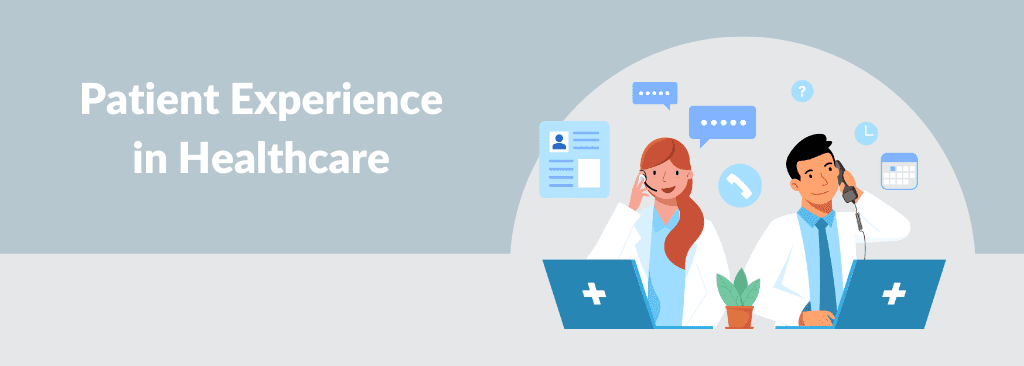Four Ways to Deliver a Patient Experience in Healthcare
According to Mckinsey Research, 60% of customers expect to be able to schedule, reschedule and cancel a healthcare appointment, check medical records and test results, and renew a medication online.
In today’s environment, patients want access to healthcare information anytime, anywhere. This has prompted a new level of digital transformation and has matured patient expectations.
To meet the demands of patients, healthcare providers must expand their patient experience approach from traditional interactions to more patient-centric, convenient, and flexible solutions.
How to Improve Patient Experience in Healthcare?
Here are four ways to deliver an exceptional patient experience.
1. Right Technology and Automation Platform
What is the biggest need in today’s healthcare environment?
Patients want to schedule, reschedule, and cancel appointments easily with key consultants. This would also allow the providers to avoid no-shows and optimally use the consultant’s timing.
We have helped multiple providers integrate all their appointment setting applications – website, mobile health apps, telephone, and physical visits. Once the appointment is set, you can send voice broadcasting messages for patients to confirm the schedule, cancel, or reschedule the appointment with the click of a button.
This has helped us avoid no-shows for healthcare providers.
Ensure that every patient experience initiative is backed by a sponsor who works on ensuring the success of the initiative.
Healthcare workers are not attuned to using the technology tools deployed to enhance the patient experience. Focus on training them on the tools to deliver a strong patient experience.
2. Establish a Strong Omnichannel Delivery
Patients want their records to be available anytime, anywhere, with access controls.
How do you provide them?
You will have to integrate the electronic healthcare records (EHR) with the patient portals for your patients to access them easily.
Besides, your patients would have multiple queries on the EHR, like missing records or non-availability of specific information. So, you will also have to integrate them with the contact center infrastructure.
Integrated systems and channels would help you offer an omnichannel customer experience to your patients.
Research indicates that 82% of patients expect instant responses to their questions. This is possible only when you offer omnichannel capabilities.
3. Move Your Contact Center to the Cloud
Moving your healthcare contact center to the cloud would make it easy for your patients to seek and access healthcare information on the go.
With the cloud, integrations become easier with other systems and channels. Besides, it reduces the entry barriers for healthcare providers, making adoption quicker.
Besides, scaling your infrastructure per your needs becomes easier, and you can opt for a pay-as-you-go model for delivering an exceptional patient experience.
4. Enhance Self-Service Capabilities
Gartner says you spend only ten centers per self-serve inquiry versus $8 for live contact. Besides, it provides a lot of convenience for your patients compared to the need to contact your patient support or help desk.
Patients can serve themselves by going to the website or mobile apps to schedule, reschedule, and cancel appointments easily.
Patients can offer feedback on their experience when using your self-service capabilities. This would allow you to improve the experience considerably.
Check our article on: How to Improve Customer Service in Healthcare?
What Is Accelerating This Patient Experience?
During the pandemic, there was a disconnect between the healthcare facilities and the patients. The healthcare facilities realized that their communication technologies are clunky, isolated, and seriously outdated.
Towards addressing their patient needs, all of them scampered to put together some form of infrastructure with which they managed to provide the service. They had video conferencing, WhatsApp messaging, and telephonic conversations, but that wasn’t enough in all situations.
Once the effects of the pandemic waned a bit, most of them opted for a contact center platform. That, too, is a cloud-based platform as they want to ensure remote and hybrid working possibilities.
Cloud is the most critical component in contact centers today. It makes it easy to integrate with other best-of-breed applications. Once you have a single view of your patients, then the care becomes better (you achieve this through omnichannel).
- How does your contact center access the relevant EMR/EHR data?
- How does it integrate with your website, apps, and CRM? We already have pre-built integrations with many industry-leading CRM and helpdesk apps.
Often, healthcare facilities are devoid of options, for they do not have the technical know-how to choose the right platform or to manage them sustainably. That’s why you have to make it simple. Bundle everything in your cloud offering and deliver at per-minute pricing.
We provide dialers, voice, customizations, and integrations all bundled together. Besides, we offer them automated voice messaging, workforce management, workforce optimization, voice and text analytics, intelligence, list management services (centralized data repository), and compliance at per-minute pricing with enterprise-grade security and redundancy.
Healthcare, as we know, will no longer exist in the future. It would move from reactionary care to proactive and preventive care.
Virtual and assisted care will play a key role in this change to provide a modern and streamlined patient experience.
Contact centers will be the fundamental building block of the patient experience, especially the omnichannel platforms.
